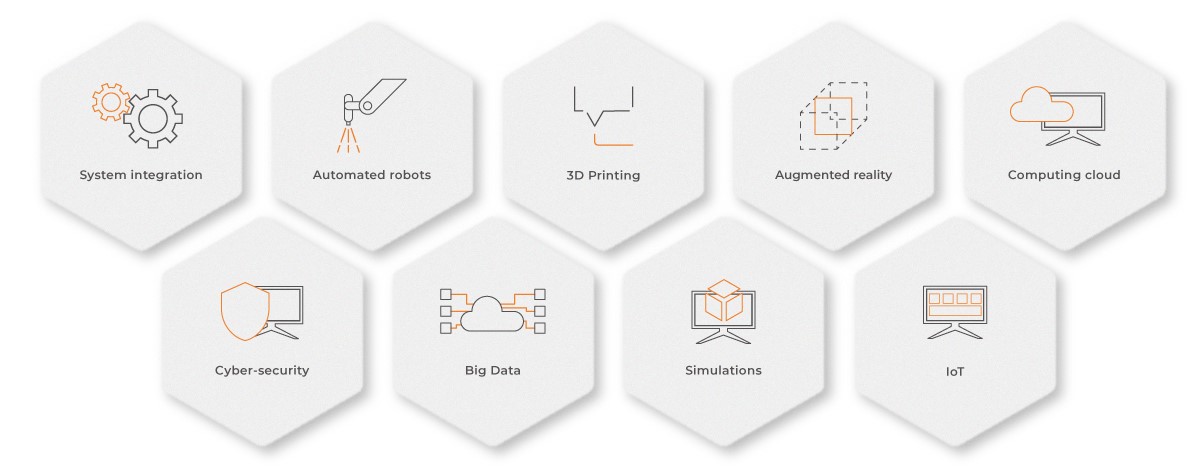Currently, there is much talk about the role of Industry 4.0 in the development of modern companies. The services provided by ATMAT specialists undoubtedly fit into the characteristics of the fourth industrial revolution. Where does this name come from? What are the characteristics of this stage in the development of the modern world?
Industry 4.0 is a relatively early stage that began with digitization and thanks to the dynamic development of the Internet. The crucial issues in the context of this era of growth are the solutions used in smart factories. Although many people associate them with industrial robots, there are many more areas related to this stage of development. These include:


The beginning of Industry 4.0
Industry 4.0 derives its name from the German Industrie 4.0 and is closely associated with the German government's high-tech strategy and transformation project. The stage name was officially used for the first time in 2011 during the trade fair held in Hannover.
Since then, more and more companies have decided to digitize and modernize their businesses by introducing systems that combine automation, data acquisition and processing along with the competencies of a specialized human resource.
What are the advantages of investing in Industry 4.0 innovation?
According to the March 2021 report "Research and trends; Technological transformation of companies in Poland" published on the Future Industry Platform developed based on research conducted by the Humanites Institute, the benefits of digital transformation from the perspective of companies include:
- Increase in market competitiveness
- Flexible approach to customer needs
- Strengthening brand image
- Optimization of processes taking place in companies
- Increased safety of employees
- Quick response when changes occur
The COVID-19 pandemic and the risks associated with maintaining production continuity and potential employee absence have undoubtedly accelerated change in this area. But what does the situation look like for companies in the manufacturing sector? What is the current level of automation in Poland? When it comes to the industrial sector, it is worth noting the state of robotization.
Robotization in Poland
According to the International Federation of Robotics 2020 report, Poland had 2,651 new robots installed in 2018 (a 40% increase compared to 2017) and 2,642 in 2019. And while there were about 15,800 robots installed in businesses across Poland at the end of 2020, the robotization density is less satisfactory. According to the report, in 2019 there were only 46 robots per 10,000 industrial workers (for example, in the Czech Republic, there are 147 robots per 10,000 workers). That's more than three times as many. To present the state of robotization in Poland even more accurately, it is worth noting South Korea, where there are 396 robots per 10 thousand workers, while in Japan - 332.
As can be seen, the level of robotization in our country is still at a low point. However, the robotization market in Poland is still developing, and the number of robots installed each year is slowly increasing.
The most robotized industry in Poland is the automotive sector, with 190 robots per 10 thousand employees.
Industry 4.0 is a composite of high-performance and intelligent technologies and systems that enable machines to work together efficiently according to well-designed processes. In addition, industry 4.0 technologies support analytics and enable testing the effectiveness of a workstation or production line, as well as help eliminate potential errors.
While it might seem that these solutions can only be implemented in large companies, in the upcoming article we will present Industry 4.0 solutions that are possible to implement even in a small manufacturing company.
